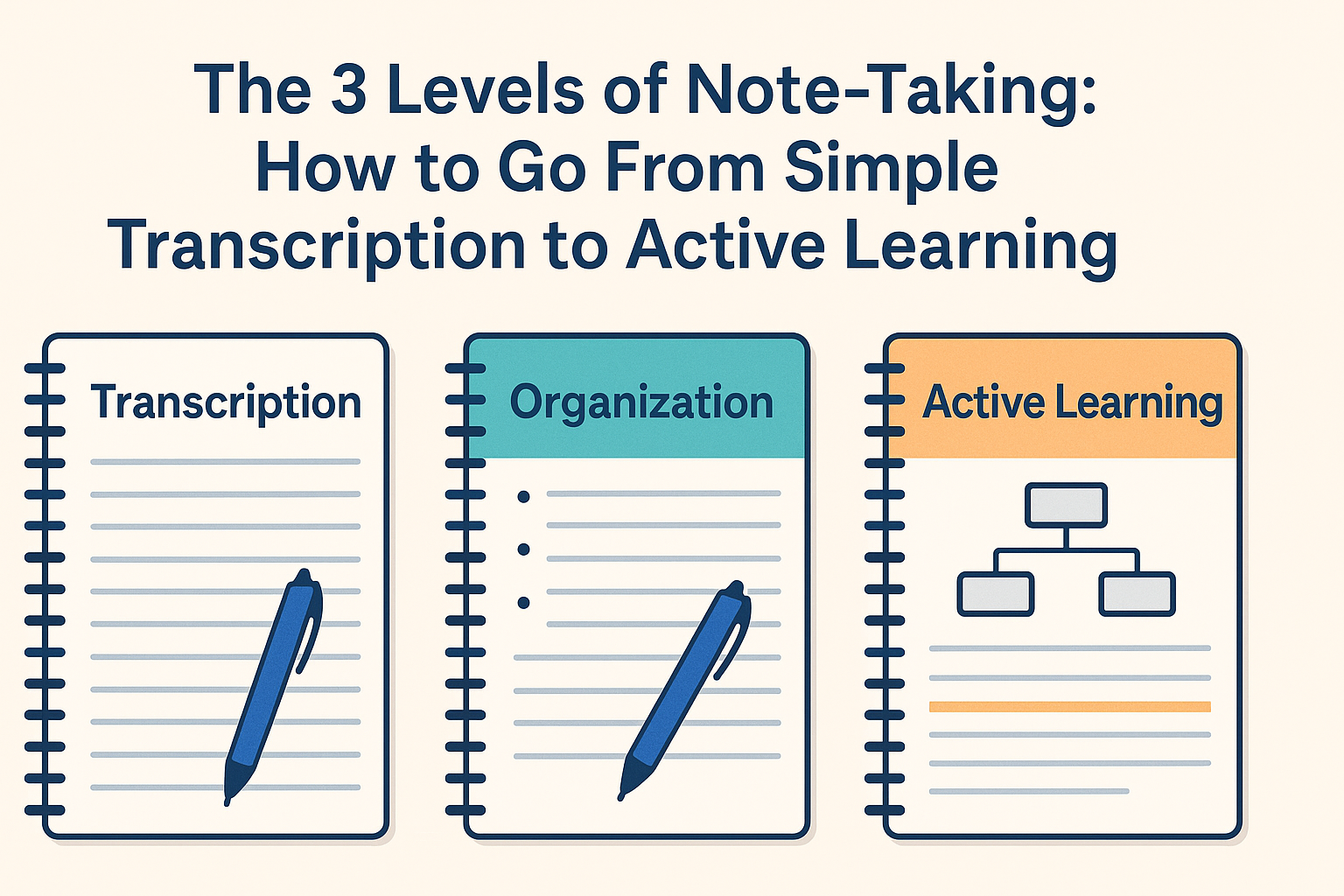Why Most Digital Notes Fail
In the age of laptops and tablets, taking notes should be easier than ever. Yet, for many students, the result is the same: a massive, intimidating document of run-on sentences and half-finished thoughts. When exam season rolls around, this “wall of text” is often more stressful than it is helpful.
The problem isn’t the technology; it’s the method. Effective learning isn’t about capturing every single word. It’s about processing, organizing, and synthesizing information.
Let’s explore the three levels of note-taking. By understanding where you are, you can take concrete steps to improve your study habits.
Level 1: The Transcriber
This is the most common and least effective method. The goal of the Transcriber is to write down everything the professor says, as they say it.
- Method: Frantically typing in a linear document (Google Docs, Word, Apple Notes).
- Result: A long, chronological, and unstructured transcript.
- The Problem: Your brain is so focused on the act of typing that it has no capacity left for active listening and understanding. You become a stenographer, not a student. This method captures information but does little to build knowledge.
How to Improve: If you find yourself stuck in this mode, the first step is to free up your brain. Try recording the audio of your lecture. This simple act allows you to stop typing and start listening, which is the foundation for the next level.
Level 2: The Organizer
The Organizer understands that raw text isn’t enough. The goal is to give the information structure and hierarchy.
- Method: After the lecture (using a recording or messy live notes), the student goes back and restructures the content. They use headings, bullet points, and bold text to group related ideas.
- Result: A well-organized outline of the lecture’s content.
- The Problem: This is a huge improvement! However, it’s still a passive review of the material. It organizes what was said, but doesn’t yet challenge you to think about why it’s important or how it connects to other concepts.
How to Improve: The key to moving to the next level is to create a system that forces active recall. This is the principle behind the Cornell Notes method. After organizing your notes, create a separate column or section with key questions or terms. Cover up your detailed notes and try to answer those questions from memory. This active engagement is what builds long-term retention.
Level 3: The Synthesizer
This is the gold standard of learning. The Synthesizer’s goal is not just to record and organize, but to create a new, condensed piece of knowledge that they can use to study from.
-
Method: The student employs a structured system like Cornell Notes from the start. They process the information through three distinct stages:
- Record: Capture the detailed notes during or after the lecture.
- Question: Pull out the most important “big ideas” and formulate them as questions or keywords in a cue column. This distills the essence of the lecture.
- Summarize: This is the most critical step. The student writes a 1-2 paragraph summary in their own words at the bottom of the page. To do this, they must have truly understood the material and the connections between its different parts.
-
Result: A powerful, one-page study guide that is both a comprehensive record and a tool for active recall.
The Ultimate Goal: The summary created by a Synthesizer should be so effective that they could read it alone the day before an exam and have a complete understanding of the lecture’s content.
Making the Leap to Level 3
Moving from a simple Organizer to a Synthesizer requires effort, but it’s the most efficient path to deep learning. The process of creating cues and writing a true summary forces your brain to engage with the material on a much deeper level.
While you can do this manually, this is where automation can be a powerful partner. By using a tool to handle the initial transcription (Level 1) and basic organization (Level 2), you can free up your mental energy to focus on the high-value work of a Synthesizer: asking the right questions and building true understanding.
*At [Your App Name], we built a tool to automate the first two levels, delivering a perfectly structured set of Cornell Notes and a comprehensive summary. This lets you jump straight to Level 3, using your time to study and learn, not just to type. Learn more about our approach. *
